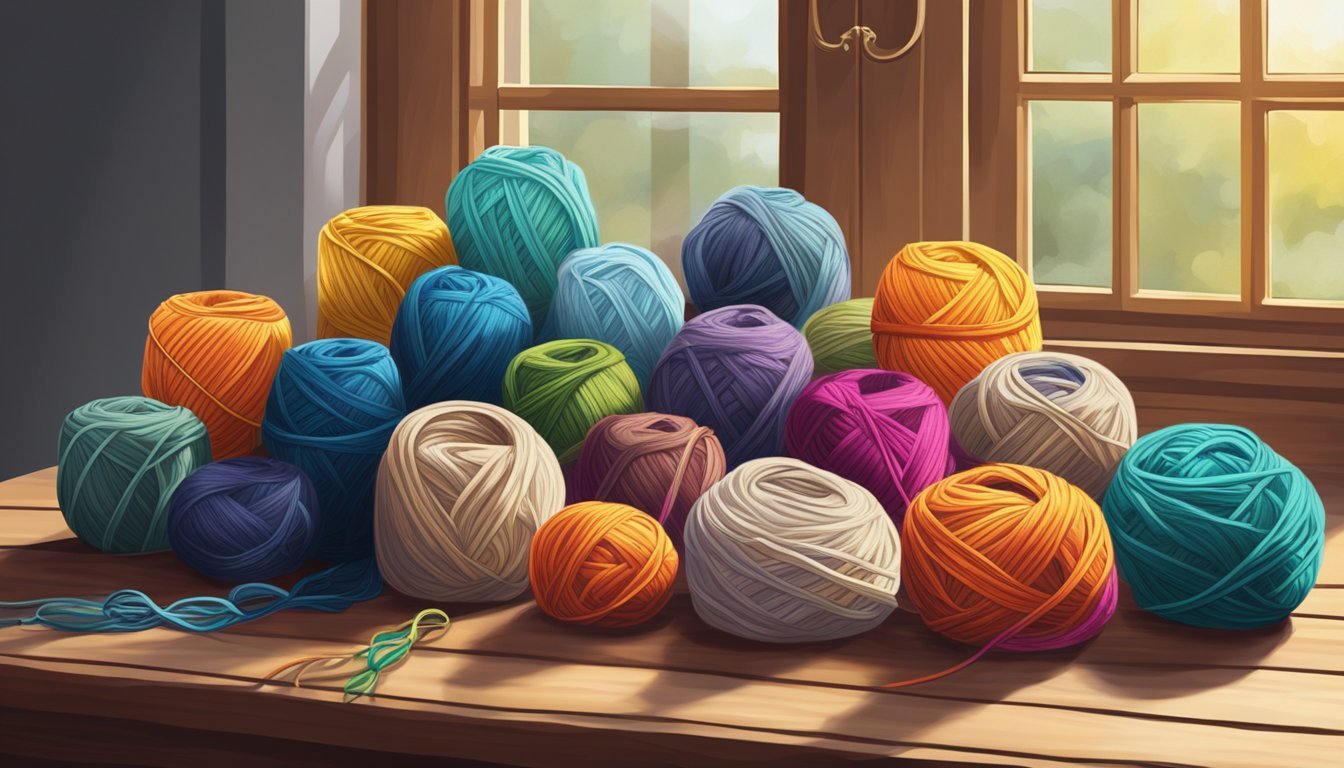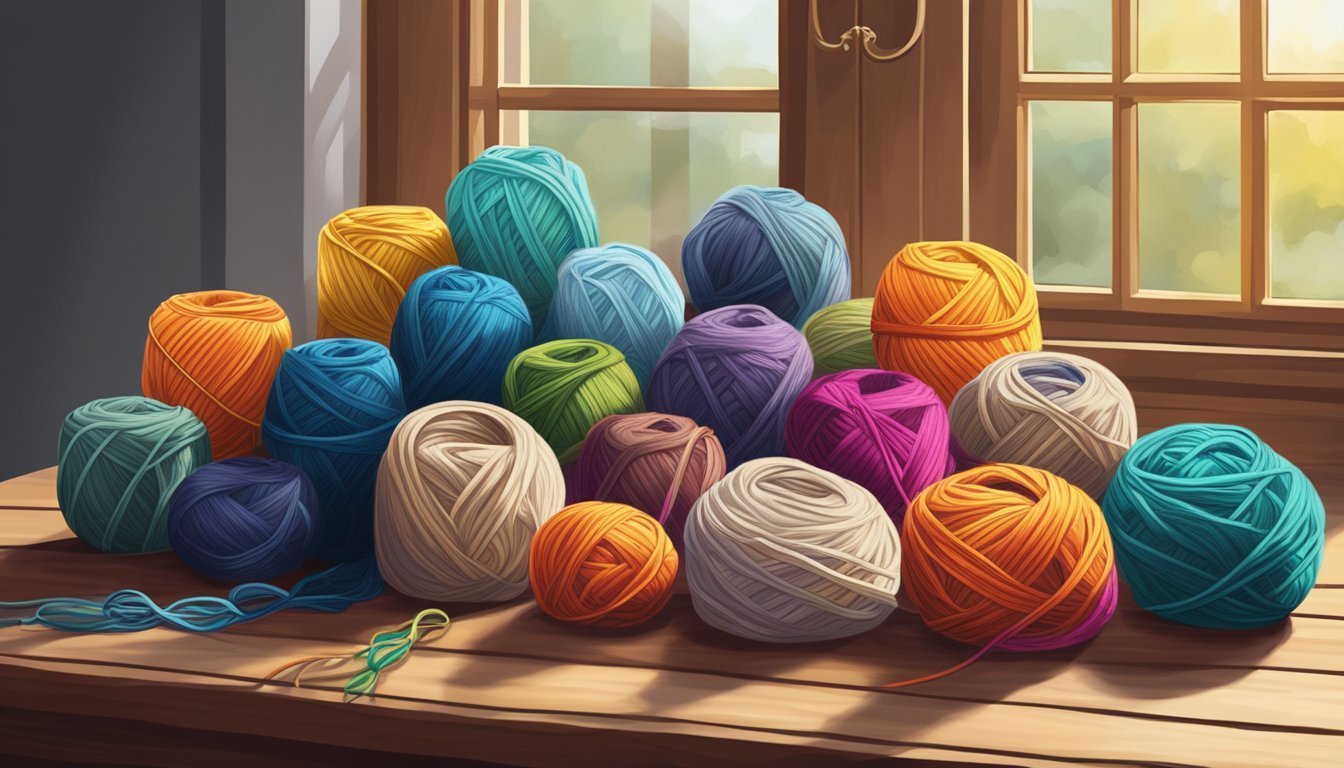Choosing the right yarn for your next project can feel a bit overwhelming with so many options available. Knowing the factors that influence your choice can help you make an informed decision that enhances your crafting experience.
From the fiber content to the weight, each yarn type can significantly impact the finished product.

Whether you’re knitting a cozy sweater or crocheting a delicate shawl, selecting the perfect yarn is crucial to achieving the look and feel you want.
Understanding your project’s requirements and how different yarns behave will make your crafting journey more enjoyable and successful.
1) Consider Fiber Content
Choosing the right fiber content is key to your project’s success.
Each type of yarn behaves differently, impacting the look and feel of your finished item.
Wool is a popular choice for its warmth and elasticity.
It works well for many projects, especially if you’re looking for something cozy.
Merino wool adds softness, making it great for garments worn next to the skin.
Cotton offers a cool and durable option, ideal for summer wear and home decor.
It can give your projects a more relaxed drape, perfect for dishcloths or lightweight shawls.
Acrylic is a budget-friendly choice.
It’s easy to care for and can mimic the properties of other fibers.
However, it may not have the same warmth or breathability as natural fibers.
Consider blends, too.
They can combine the best features of different fibers, providing durability and comfort.
Think about what you need for your project and choose accordingly!
2) Check Yarn Weight
When you pick yarn for your project, checking the yarn weight is crucial.
Yarn weight affects how the finished piece looks and feels.
Yarn is categorized from 0 to 7, ranging from lace to jumbo.
Each category has its ideal uses.
For instance, lighter yarns work well for delicate items, while heavier yarns are great for cozy blankets.
Most yarn labels will show a weight category number, making it easy to identify.
This label helps you select a yarn that matches your pattern.
If a pattern calls for a specific weight, stick to it.
Deviating can lead to sizes or drapes that aren’t what you expected.
Using the right weight also impacts your gauge, which is essential for fitting.
Always check your yarn’s weight against your project needs to avoid surprises later.
Look at Ply Count
When choosing yarn, ply count is key.
Ply refers to how many strands of fiber are twisted together.
For instance, a 5 ply yarn consists of five strands, making it thicker and sturdier.
A higher ply count often leads to a softer and more durable fabric.
This can affect the look and feel of your finished project, so consider what you’re creating.
If you’re working on something delicate, like lace, a finer yarn might be better.
Different projects call for different ply counts.
For small items such as socks or baby garments, a lower ply count like 2 or 3 might suffice.
This keeps the fabric lightweight and easier to work with.
Conversely, if you’re making something that needs more structure, such as a sweater, you might want to opt for a 4 or 5 ply yarn.
Pay attention to how the ply counts relate to your project type, to ensure a successful outcome.
4) Review Color Options
Choosing the right color can be one of the most enjoyable parts of selecting yarn.
Start by looking at photos of finished projects to see how different colors interact.
This visual reference can guide your choices effectively.
Consider the mood you want to convey.
Warm colors like reds and oranges can create a vibrant feel, while cool colors such as blues and greens bring calmness.
Don’t forget about dye lots.
Colors can vary slightly between batches, so it’s important to buy enough yarn from the same lot to keep consistency in your piece.
Experiment with color combinations.
You can use a color wheel to find complementary shades or go for analogous colors that sit next to each other for a smoother look.
Lastly, trust your instincts.
If a color immediately catches your eye, there’s a good chance it will work well in your project.
Enjoy the process and let your creativity shine!
5) Evaluate Texture

When it comes to choosing yarn, texture plays a significant role in how your finished project will feel and behave.
Think about what you’re making and how it will be used.
Soft yarns are great for cozy items like blankets or scarves, while firmer textures might be better for structured garments like sweaters.
You want to pick a texture that matches your project’s needs.
Don’t forget to check the care requirements.
If your item will need frequent washing, opt for a texture that holds up well in the laundry.
Fabrics that are too delicate might not withstand regular use.
A quick way to gauge texture is to perform a test swatch.
This lets you see how the yarn drapes and feels, helping you decide if it’s right for you.
Remember, the right texture can make all the difference in your crafting experience and the final look of your piece.
Understanding Yarn Types

When selecting yarn, it’s important to know the differences between natural, synthetic, and blended options.
This understanding helps you choose the right material for your project based on texture, durability, and care requirements.
Natural Vs. Synthetic
Natural yarns come from animal or plant sources.
Examples include wool, cotton, and silk.
These fibers are often breathable and have varying qualities, such as warmth, absorbency, and softness.
Wool is excellent for warmth and elasticity, while cotton is ideal for breathability and softness, making it perfect for summer garments.
On the flip side, synthetic yarns, like acrylic and nylon, are man-made and generally more affordable.
They offer durability and are often stain-resistant.
Acrylic can mimic the feel of wool without the itchiness, making it a popular choice for beginners.
Consider your project’s needs; if you require something warm and natural, opt for wool.
For durability and easy care, synthetic might be the way to go.
Blended Yarns
Blended yarns combine natural and synthetic fibers to create unique characteristics.
Common blends include wool and acrylic or cotton and polyester.
These combinations often enhance the best features of each fiber.
For example, a wool-acrylic blend can provide warmth and elasticity while maintaining machine washability.
This makes it easier to care for than pure wool.
Blended yarns are versatile and can suit various projects, from garments to home decor.
When trying to choose a yarn blend, consider the feel and handling.
Texture may vary significantly, and some blends may produce a softer or sturdier fabric depending on the proportions used.
Testing a sample can help you make the best choice for your crafting needs.
Matching Yarn to Project

Choosing the right yarn for your project involves careful consideration of various factors, including thickness and texture.
Understanding these aspects helps ensure your finished piece looks and feels just right.
Yarn Thickness and Weight
Yarn comes in various thicknesses, classified as weights.
Common categories include lace, fingering, sport, worsted, and bulky.
Each weight serves different project types.
For example, lighter yarns like lace are great for delicate shawls, while bulky yarns are perfect for warm hats or blankets.
Tips for selecting yarn weight:
- Gauge Swatches: Always create a gauge swatch. This step helps you confirm if the chosen yarn matches the required gauge for your pattern.
- Project Type: Consider the item you’re making. Sweaters often require worsted weight for warmth, while soft, lighter fabrics suit summer tops.
- Yarn Substitutions: If you’re substituting yarns, pick one with a similar thickness to maintain the project’s intended look and fit.
Texture and Feel
The texture of the yarn can significantly affect the final product.
It influences not only the look but also the comfort of the finished item.
Some yarns are soft and smooth, while others may be more textured or scratchy.
Key factors to consider:
- Fiber Content: Natural fibers like cotton or wool offer different textures compared to synthetic options. For example, cotton has a firmer feel, making it ideal for summer projects, while wool is soft and warm.
- Drape and Structure: Lighter, smoother yarns drape beautifully and are suitable for flowing garments. Textured yarns can provide structure but may also add bulk.
- Purpose of Item: If you’re knitting something to wear close to your skin, prioritize soft, breathable yarns. For items like bags or rugs, sturdiness might take precedence.


